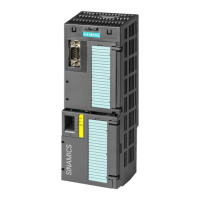
Do you have a question about the Siemens SED2-3/35B and is the answer not in the manual?
| Rated Power | 3 kW |
|---|---|
| Protection Class | IP20 |
| Operating Temperature | -10°C to +50°C |
| Output Voltage | 0-480 V AC |
| Communication Interface | Modbus RTU |
| Relative Humidity | 95% (non-condensing) |
| Altitude | 1000 m |
| Cooling Method | Forced air cooling |
Covers hazardous voltages, authorized personnel, and general safety rules.
Details safety requirements for setup, installation, and commissioning.
Highlights risks during operation, emergency stops, and restart procedures.
Specifies authorized personnel and precautions for repairs and component replacement.
Covers grounding, general regulations, and terminal safety for mounting.
Covers grounding, authorized personnel, and terminal voltage warnings.
Provides guidelines for minimizing electromagnetic interference.
Details best practices for wiring to ensure EMC compliance.
Provides a pre-start checklist for ensuring proper installation and readiness.
Presents an overview of commissioning procedures using BOP or AOP.
Details the steps for quick commissioning using parameters P0010 and P3900.
Explains how to change parameters via BOP, AOP, or serial interface.
Details parameter access levels and filtering for easier configuration.
Introduces core functions like digital and analog inputs/outputs.
Introduces specific functions for HVAC applications.
Explains how to configure the PID controller for temperature, pressure, or speed control.
Details how to detect belt failure by monitoring torque/frequency curves.
Describes using a sensor and pulse train for belt failure detection.
Explains controlling additional pumps/fans via the PID system and relay outputs.
Guides on connecting and configuring the LG-Ni 1000 sensor for temperature control.
Explains the integrated bypass function for applications requiring maximum motor output.
Describes the hibernation function for reducing output frequency to 0 Hz after a set time.
Provides a comprehensive list of parameters, their default values, and access levels.
Offers guidance on diagnosing common issues via the operator panel.
Lists error codes, their causes, diagnosis, and recommended reactions.
Provides lists of warning codes, their causes, and suggested remedies.











